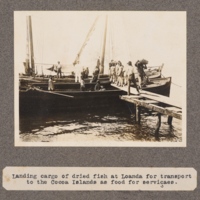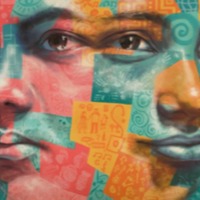
Vicheth
There are an estimated 610,000 people living in conditions of modern slavery in Thailand (GSI 2018). Men, women and children are victims of human trafficking for forced labour in the Thai fishing industry, subjected to physical abuse, excessive and inhumane working hours, sleep and food deprivation, forced use of methamphetamines and long trips at sea confined to the vessel. Due to the fishing industry relying on trans-shipments at sea to reduce expenditure, some find themselves trapped on long-haul trawlers for years at a time. This makes the monitoring of enslaves labour on fishing vessels costly and difficult. Vicheth migrated to Thiland with his cousin’s nephew because his family was poor. A broker they met in Poipet trafficked them on to a boat carrying rice. On the boat he worked shifting bags of rice, with each bag weighing 25-50kg, Vicheth’s pay depended on how much he lifted. However, when he asked for money, the boss told him he had not yet worked enough. With a group of workers and a crane, Vicheth would lift several tonnes of rice per day, sometimes getting a break during the day but often working until 2am with no time to sleep. Vicheth worked in the Thai sea and was trafficked several times on to different boats.
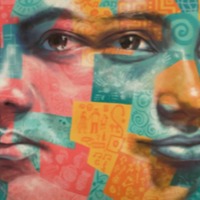
Samnang & Sopheak
Cambodia remains a source, transit and destination country for men, women and children subjected to forced labour and sex trafficking. Cambodian adults and children migrate to other countries within the region and increasingly to the Middle East for work; many are subjected to forced labour on fishing vessels, in agriculture, in construction, in factories and in domestic servitude—often through debt bondage. Significant numbers of male Cambodians continued to be recruited in Thailand to work on fishing boats and subjected to forced labor on Thai-owned vessels in international waters. Cambodian victims escaping from this form of exploitation have been identified in Malaysia, Indonesia, Mauritius, Fiji, Senegal, South Africa, and Papua New Guinea. Cambodian men reported severe abuses by Thai captains, deceptive recruitment, underpaid wages, and being forced to remain aboard vessels for years. In 2010, two brothers Samnang and Sohpeak left their home and country to find work they hoped would help their struggling family. The brothers were deceived and trafficked on to fishing boats where they were forced to work long hours with no rest and subjected to physical abuse.
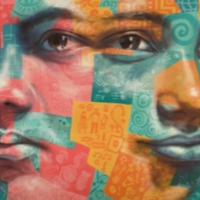
Lea
Men, women and children make up those trafficked in Indonesia, subjected to forced labour and commercial sexual exploitation. Brokers working in rural areas are known to lure men and boys into forced labour on palm oil, rubber and tobacco plantations, while women and under-age girls are lured into work as domestics in private homes and as commercial sex workers. Rising unemployment and slowed job creation has pushed people into the informal sector unprotected by labour laws and thus made them more vulnerable to exploitation. There are currently only 18 shelters in Indonesia working to rescue and rehabilitate survivors of human trafficking. Lea, now 26 and a native of Nafai village in Savannakhet province’s Kaisone district, was first sold as a teen to work in Thailand on a rubber plantation by a neighbour. After four months working to pay off their 'debt' to their employer, Lea escaped the plantation. At 15 years old, alone and with no money, he made his way to Bangkok where a taxi driver told him her could earn good money working on a fishing boat. Lea was locked in a house for 3 days before being taken on to the fishing boat where he would work long hours with little rest for 3 years without pay. Lea was finally able to escape, hiding in a forest after being taken ashore. Lea now works as a labourer on construction sites on and in other jobs on Tuan Island as he waits to go home.
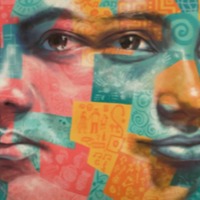
Yum
Men, women and children are victims of human trafficking for forced labour in the Thai fishing industry. Enslaved people are subjected to physical abuse, excessive and inhumane working hours, sleep and food deprivation, forced use of methamphetamines and long trips at sea confined to the vessel. Due to the fishing industry relying on trans-shipments at sea to reduce expenditure, some find themselves trapped on long-haul trawlers for years at a time. This makes the monitoring of enslaves labour on fishing vessels costly and difficult. The Thai Government has faced severe pressure to tackle forced labour specifically in the fishing sector, with the European Commission threatening a trade ban in 2015 for not taking sufficient measures to combat illegal and unregulated fishing that would cause the loss of up to US$1.4million a year in seafood exports. As a result the Government have reportedly accelerated efforts to combat labour exploitation, however despite this most workers in the Thai fishing sectors remain unregistered. Yum was in Cambodia looking for work when he decided to travel with friends to Thailand. On the way, they were met by a man who offered them work on his farm, which they accepted. They were forced to work long hours with no wages. After a month, the farmer fled and Yum was offered work on a construction site in Thailand. However, in Thailand Yum arrived not at a construction site but a sea port. It was only after days on a fishing vessel that he was told he had been sold. Subjected to months at sea with poor nutrition and daily beatings, Yum was finally able to escape one the boat reached Indonesian waters.
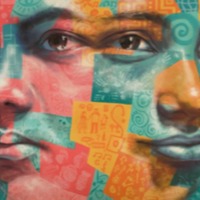
Kwame and Joe
In 2016, the estimates of modern slavery in Sub-Saharan Africa accounted for approximately 13.6 percent of the world's total enslaved population. As evident from surveys conducted in Ghana, Nigeria, South Africa and Ethiopia by Walk Free Foundation, slavery in Sub-Saharan Africa takes the form of forced labour and forced marriage. In Ghana, survey results suggest that there are an estimated 103,300 people enslaved in that country, of which 85 percent are in forced labour, and 15 percent are in forced marriage. For forced labour, the main industries of concern are farming and fishing, retail sales and then manual labour and factory work. In Nigeria, survey results suggest that forced labour is predominantly within the domestic sector, although it was impossible to survey in three regions due to high conflict. In South Africa, the industries most reported in the survey include the commercial sex industry, manual labour industries such as construction, manufacturing and factory work, and drug trafficking. Kwame, 14, and Joe, 12, were sold by their mother to a fisherman in Ghana.
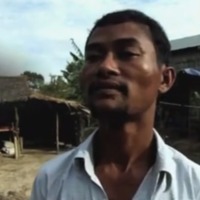
Vannak
Men, women and children are victims of human trafficking for forced labour in the Thai fishing industry. Enslaved people are subjected to physical abuse, excessive and inhumane working hours, sleep and food deprivation, forced use of methamphetamines and long trips at sea confined to the vessel. Due to the fishing industry relying on trans-shipments at sea to reduce expenditure, some find themselves trapped on long-haul trawlers for years at a time. This makes the monitoring of enslaves labour on fishing vessels costly and difficult. The Thai Government has faced severe pressure to tackle forced labour specifically in the fishing sector, with the European Commission threatening a trade ban in 2015 for not taking sufficient measures to combat illegal and unregulated fishing that would cause the loss of up to US$1.4million a year in seafood exports. As a result the Government have reportedly accelerated efforts to combat labour exploitation, however despite this most workers in the Thai fishing sectors remain unregistered. Vannak sought work away from home in order to provide for his family. He was offered a job by a taxi driver drying fish in Thailand and told that if he refused he would have to pay for the journey, money he did not have. Vannak was locked up and forced on to a fishing boat where he worked for 3 years under the constant threat of violence and never receiving any salary for his work. Eventually, Vannak escaped, swimming twenty minutes to shore and making his way back to Cambodia and his family.

Ko Min
Men, women and children are victims of human trafficking for forced labour in the Thai fishing industry. Enslaved people are subjected to physical abuse, excessive and inhumane working hours, sleep and food deprivation, forced use of methamphetamines and long trips at sea confined to the vessel. Due to the fishing industry relying on trans-shipments at sea to reduce expenditure, some find themselves trapped on long-haul trawlers for years at a time. This makes the monitoring of enslaves labour on fishing vessels costly and difficult. The Thai Government has faced severe pressure to tackle forced labour specifically in the fishing sector, with the European Commission threatening a trade ban in 2015 for not taking sufficient measures to combat illegal and unregulated fishing that would cause the loss of up to US$1.4million a year in seafood exports. As a result the Government have reportedly accelerated efforts to combat labour exploitation, however despite this most workers in the Thai fishing sectors remain unregistered. Ko Min was working on a rubber plantation when he was abducted, sold and forced on to a fishing boat. Told he had to work to pay off debt Ko Min was forced to work for up to three days at a time with no sleep. Eventually the boat docked and with the captain distracted Ko Min was able to escape, borrowing money and hiring a motorbike to travel to Hat Yai he was reunited with his brother and the rest of his family.
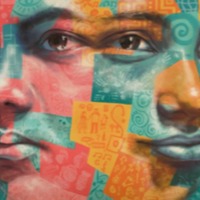
Mabel
On Lake Volta in Ghana, child slaves are forced to work day and night on dangerous and deadly fishing boats. Mabel was one of them, trafficked into slavery by her own impoverished family. Mabel was forced into labor off the boat, too. She was forced to work around the clock. Early in the morning, she was forced to collect wood and cook maize porridge. She was forced to make lunch and dinner for workers on the boats. She was beaten and abused. Late at night Mabel was forced to go out fishing on the dangerous lake. Today she is free and getting an education.
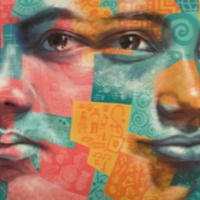
Kyi
In March 2013, 14 victims aged between 16 and 46 years, and all from Myanmar, were rescued by local police from a fishing port and processing factory in Kantang where they were being held by brokers. Most of the victims had just returned from six months at sea, on three separate fishing vessels. Despite receiving no pay, by selling dried squid to the boat they transferred fish to, one of the group was able to save enough money to buy a mobile phone and SIM card. This enabled them to alert one of the other victim’s family members, who contacted a helpline for reporting human trafficking to secure their rescue. The Environmental Justice Foundation interviewed six victims, none of whom had ever been on a fishing boat, or even seen the sea before being trafficked. They gave accounts of being deceived by brokers who told them they would be working in factories. They reported being beaten or seeing others beaten, and working in arduous conditions onboard the fishing vessels. Three of the victims had been trafficked from within Thailand, whilst working in a chicken factory in the north of the country. A visiting broker had told them that he would secure them a better job in another factory, with higher wages. "Kyi" recounts some of the brutal violence used against him and others being forced to work on these ships.
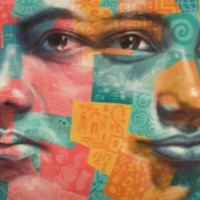
Htay
In March 2013, 14 victims aged between 16 and 46 years, and all from Myanmar, were rescued by local police from a fishing port and processing factory in Kantang where they were being held by brokers. Most of the victims had just returned from six months at sea, on three separate fishing vessels. Despite receiving no pay, by selling dried squid to the boat they transferred fish to, one of the group was able to save enough money to buy a mobile phone and SIM card. This enabled them to alert one of the other victim’s family members, who contacted a helpline for reporting human trafficking to secure their rescue. EJF interviewed six victims, none of whom had ever been on a fishing boat, or even seen the sea before being trafficked. They gave accounts of being deceived by brokers who told them they would be working in factories. They reported being beaten or seeing others beaten, and working in arduous conditions onboard the fishing vessels. Three of the victims had been trafficked from within Thailand, whilst working in a chicken factory in the north of the country. A visiting broker had told them that he would secure them a better job in another factory, with higher wages. "Htay" discusses that, in addition to forcing labour on the fishing ships, the perpetrators in this case were also committing illegal fishing in Indonesian waters.
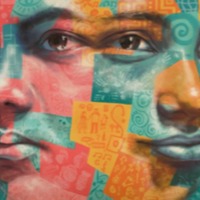
Kwasi
Kwasi spent three years in slavery on Lake Volta and was rescued in 2006 by the Association of People for Practical Life Education (APPLE), a small nonprofit organization that works directly with the fishermen and children.
Along Ghana’s Lake Volta, slave children work long hours mending, setting and pulling nets, cleaning and smoking fish, and rowing the fishing boats. Boys as young as six are forced to dive to disentangle nets caught on tree stumps below this large man-made lake. The fishermen tie weights to the children to help them descend more quickly. When the water is too cold or the children get caught in the nets below it is not uncommon to find bodies washed up on the shores. If sick or injured, the children receive no care or treatment. While most of the enslaved children are boys, some girls are used for domestic work and to sell the fish in the market. Like other trafficked girls in Ghana, they are likely to be sexually abused as well.
Lake Volta is one of the world’s largest lakes and used to be a source of fish for both the national and export markets. But in the 1960s a dam slowed the vigorous flow of water and destroyed the fishing potential of nearby communities. Facing a newly impoverished environment, some fishermen began to enslave children rather than pay adult workers. With schooling hard to obtain and family incomes around the starvation level, parents will sometimes agree to let their children go in order to gain an “advance” on their child’s labor. Normally, the fishermen promise that more money will be paid to the parents over the next year. The money never comes.
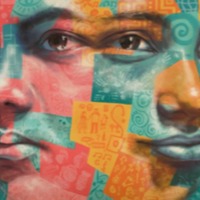
Kwame
Kwame was trafficked in 1998 and spent eight years with the same master as a slave at Lake Volta. He was rescued in 2006 by the Association of People for Practical Life Education (APPLE), a small nonprofit organization that works directly with the fishermen and children.
Along Ghana’s Lake Volta, slave children work long hours mending, setting and pulling nets, cleaning and smoking fish, and rowing the fishing boats. Boys as young as six are forced to dive to disentangle nets caught on tree stumps below this large man-made lake. The fishermen tie weights to the children to help them descend more quickly. When the water is too cold or the children get caught in the nets below it is not uncommon to find bodies washed up on the shores. If sick or injured, the children receive no care or treatment. While most of the enslaved children are boys, some girls are used for domestic work and to sell the fish in the market. Like other trafficked girls in Ghana, they are likely to be sexually abused as well.
Lake Volta is one of the world’s largest lakes and used to be a source of fish for both the national and export markets. But in the 1960s a dam slowed the vigorous flow of water and destroyed the fishing potential of nearby communities. Facing a newly impoverished environment, some fishermen began to enslave children rather than pay adult workers. With schooling hard to obtain and family incomes around the starvation level, parents will sometimes agree to let their children go in order to gain an “advance” on their child’s labor. Normally, the fishermen promise that more money will be paid to the parents over the next year. The money never comes.
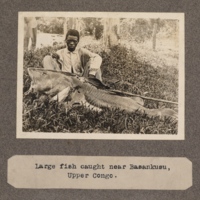
Large fish caught near Basankusu, upper Congo
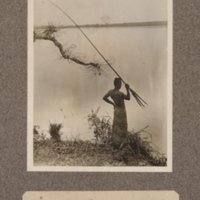
Native spearing fish on Kasai River
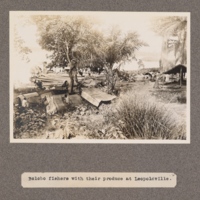
Bolobo fishers with their produce at Leopoldville
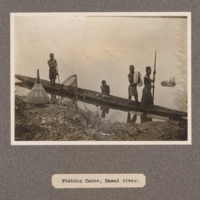
Fishing canoe, Kasai River
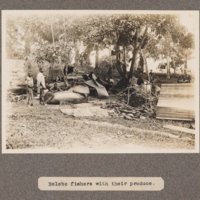
Bolobo fishers with their produce
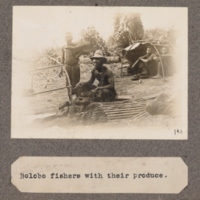
Bolobo fishers with their produce
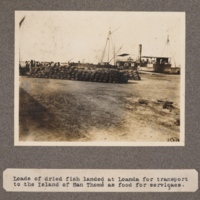
Loads of dried fish landed at Loanda for transport to the Island of San Tome as food for for the servicaes
